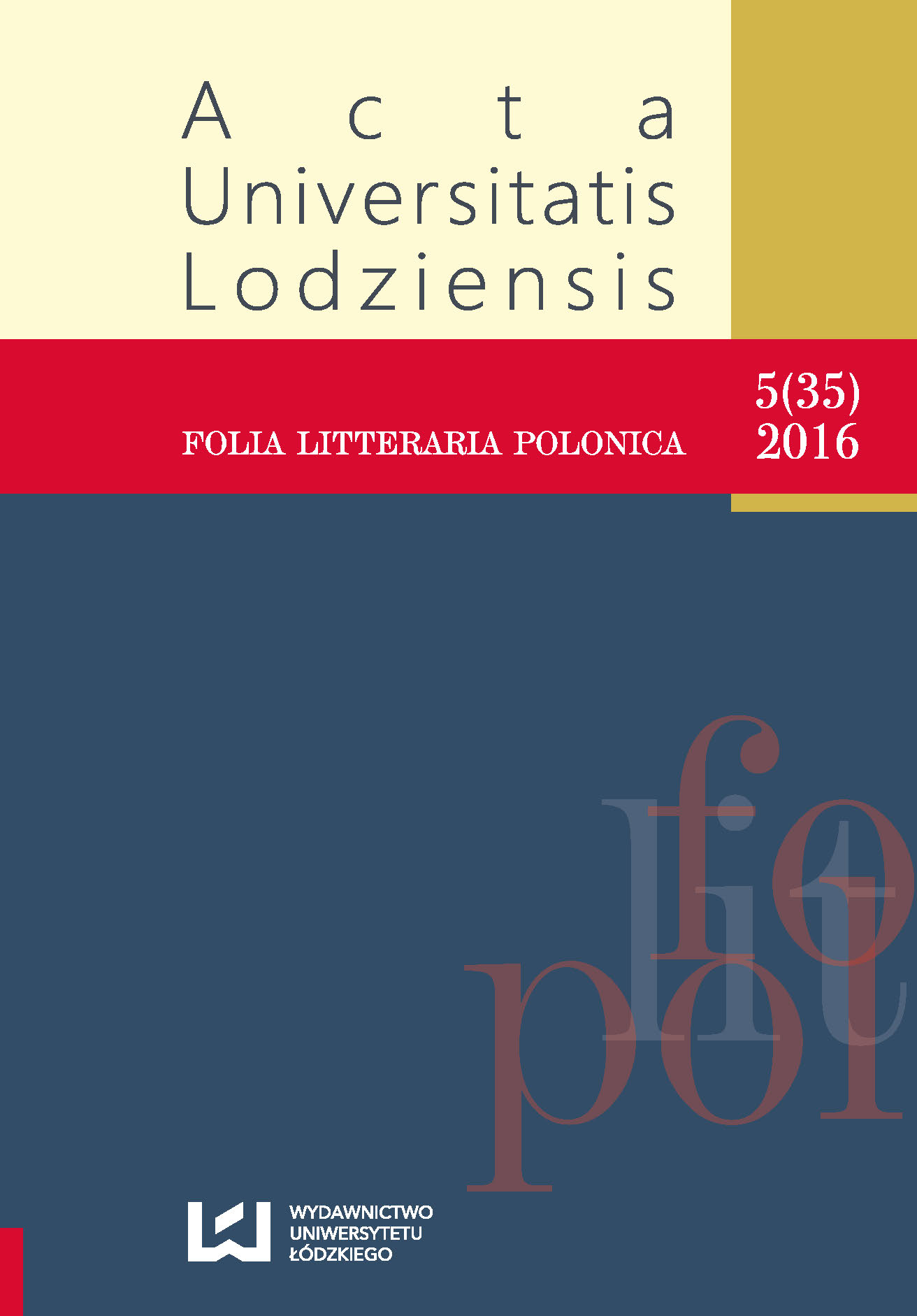The Structure of Ambiguity Phenomena (Based on Cognitive Analyses of the Ways in Which Politicians Communicate)
DOI:
https://doi.org/10.18778/1505-9057.35.06Słowa kluczowe:
ambiguity, cognitive phenomena, mental categorization, cognitive grammar, cognitive semantics, multilevelled ambiguityAbstrakt
The paper presents the ambiguity phenomena in terms of cognitive categorization and blending processes. The analyses of politicians’ programme speeches, based on Lakoff’s and Langacker’s semantics and Langacker’s grammar research, result in describing the ambiguity phenomena as sender’s or receiver’s mental concepts rather than relating it to linguistic properties of the message. Moreover, a cognitive point of view in the research on ambiguity reveals its multilevelled structure, which stems from the polysemic nature of mental categories and blends.
Pobrania
Bibliografia
Bull P., “Slipperiness, evasion and ambiguity. Equivocation and facework in noncommittal political discourse”, Journal of Personality and Social Psychology 2008, No. 27 (4), pp. 333–344.
Google Scholar
Bull P., “Slippery politicians?”, The Psychologist 2003, No. 16 (11), pp. 592–595.
Google Scholar
Bull P., Mayer K., “How to answer in political interviews”, Political Psychology 1993, No. 14 (4), pp. 651–666.
Google Scholar
Cambell J.E., “Ambiguity in the issue positions of presidential candidates: A casual analysis”, American Journal of Political Science 1983, No. 27 (2), pp. 284–293.
Google Scholar
Cwalina W., „Wieloznaczność poznawcza w komunikacji”, in: „Psychologia poznawcza w praktyce. Ekonomia, biznes, polityka”, ed. A. Falkowski, T. Zaleśkiewicz, Państwowe Wydawnictwo Naukowe, Warsaw 2012, pp. 187–261.
Google Scholar
Fauconnier G., Turner M., „Tworzenie amalgamatów jako jeden z głównych procesów w gramatyce”, transl. W. Kubasiński, D. Stanulewicz, in: „Językoznawstwo kognitywne II. Zjawiska pragmatyczne”, ed. W. Kubasiński, D. Stanulewicz, Wydawnictwo Uniwersytetu Gdańskiego, Gdansk 2001, pp. 173–211.
Google Scholar
Graeser A.C., Millis K.K., Zwaan R.A., “Discourse comprehension”, Annual Review of Psychology 1997, No. 48, pp. 162–189.
Google Scholar
Kardela H., „(Nie)podobieństwo w morfologii. Amalgamaty kognitywne”, in: „Kognitywistyka. Podobieństwo”, ed. H. Kardela, Z. Muszyński, M. Rajewski, Wydawnictwo Uniwersytetu Marii Curie-Skłodowskiej, Lublin 2006, pp. 195–211.
Google Scholar
Maruszewski T., „Psychologia poznania”, Gdańskie Wydawnictwo Psychologiczne, Gdansk 2001.
Google Scholar
Walton D., “New dialectical rules for ambiguity”, Informal Logic 2000, No. 20 (3), pp. 261–274.
Google Scholar
https://www.premier.gov.pl/expose-premier-beaty-szydlo-stenogram.html [1.03.2016].
Google Scholar
https://www.premier.gov.pl/realizacja-planow/expose-premier-ewy-kopacz-stenogram.html [dostęp: 1.03.2016].
Google Scholar
Pobrania
Opublikowane
Jak cytować
Numer
Dział
Licencja

Utwór dostępny jest na licencji Creative Commons Uznanie autorstwa – Użycie niekomercyjne – Bez utworów zależnych 4.0 Międzynarodowe.











